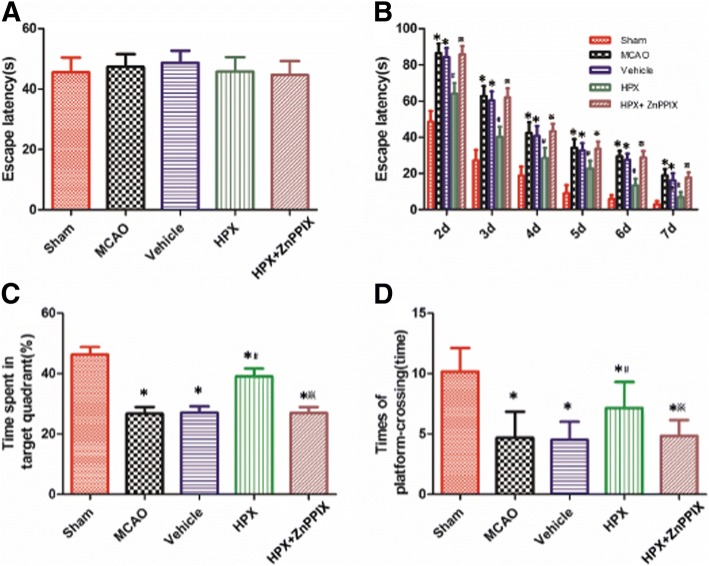Fig. 1.
Intracerebroventricular HPX injection improved the long-term spatial learning and memory ability in rats after focal I/R injury. The baseline escape latencies in the spatial probe test among the five groups before sham operation and focal cerebral I/R injury (− 24 h) were not significantly different (a). Compared with rats in the sham group, rats in the MCAO group needed more time to find the platform hidden under water in the spatial probe test (b) at 2–7 d after focal I/R injury, spent less time in the target quadrant (c) and crossed the platform fewer times in the hidden platform test (d) at 7 d after focal I/R. Compared with the rats in the vehicle group, the rats in the HPX group exhibited a shorter escape latency on day 2 to 7 after focal cerebral I/R injury in the spatial probe test (b) and a increase in the time spent in the target quadrant (c) and number of platform crossings (d) in the hidden platform test at 7 d after focal I/R. The inhibitor of HO-1, ZnPPIX, blocked the effect of HPX on shortening the escape latency in the spatial probe test and increasing the time spent in the target quadrant (c) and number of platform crossings (d) in the hidden platform test. However, there were no significant differences in the escape latency in the spatial probe test (b), the time spent in the target quadrant (c) or the number of platform crossings (d) in the hidden platform test between the MCAO and vehicle group after focal cerebral I/R injury. *P < 0.05 vs. sham group; #P < 0.05 vs. vehicle group; ※P < 0.05 vs. HPX group

